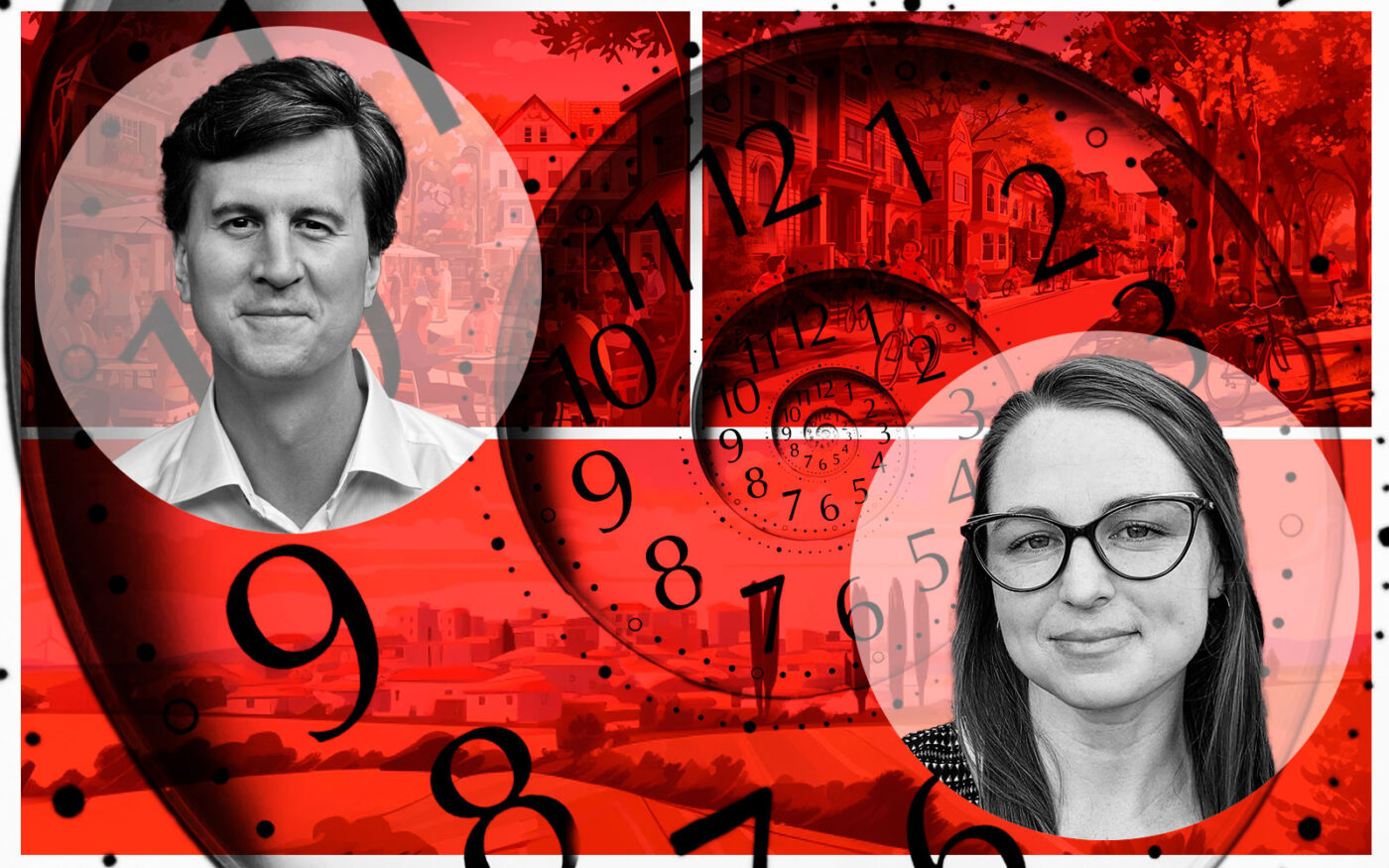 California Forever envisions retro housing in Solano County
California Forever envisions retro housing in Solano County
Trending
Clock ticking for California Forever to win votes in Solano County
Signature campaign will ramp up to put utopian city zoning measure on November ballot

An hourglass is running for Silicon Valley billionaires to convince voters to allow a utopian city in Solano County.
The billionaires’ California Forever, which has spent $900 million to secretly buy more than 60,000 acres of farms between Rio Vista and Fairfield, has 10 months to convince 200,000 voters to approve the project, the San Francisco Chronicle reported.
Next month, Folsom-based Flannery Associates, doing business as California Forever, will submit a measure to the county and start collecting signatures to put it on the November ballot.
The initiative would alter the county’s general plan to allow for building on unincorporated county land, and create a specific plan for the new city, according to California Forever CEO Jan Sramek.
“It’s going to show the location of the new community, some of the transportation improvements, the different zoning districts,” Sramek told the Chronicle. “There will be a lot of design and performance standards.”
The project, backed by such tech titans as Michael Moritz, Reid Hoffman, Marc Andreessen, and Lauren Powell Jobs, aims to build a city of tomorrow with tens of thousands of homes near Travis Air Force Base.
A grassroots group dubbed Solano Together has formed to fight the ballot initiative. The coalition is led by the Greenbelt Alliance and endorsed by the Sierra Club.
While Solano County needs housing, it should be built in existing cities where infrastructure exists, not on the ranches and farms for cattle and sheep, wheat and barley, according to the group.
Sadie Wilson, a policy director for Greenbelt Alliance, said the real campaign against the project will start once California Forever files the paperwork with the county. In the meantime, her coalition is emphasizing the need to preserve open space.
“This is not a new idea — it’s classic sprawl development,” Wilson told the newspaper. “We know from the past that building outside of existing communities takes tax revenue away that is vital to pay for services and infrastructure. Moving this revenue source out of the cities continues a pattern of disinvestment and blight. We need to be doubling down in our cities and building housing there.”
California Forever has already launched a publicity campaign for its unnamed city, with plans to donate $500,000 to local nonprofits in the next six months.
Its proposed zoning will include “minimum densities” which Sramek said he hopes will refute criticism that the project is exurban sprawl masquerading as urbanism.
There will also be requirements that all housing be within a 10-minute walk of three or four different community resources — such as a school, grocery store, park or church.
“They are going to see that we are serious about creating a walkable city and couldn’t build sprawl even if we wanted to,” Sramek told the Chronicle.
Editor’s note: This story has been updated to correct the maximum distance between new housing and community resources that would be implemented by California Forever’s new city.
— Dana Bartholomew
Read more
 California Forever envisions retro housing in Solano County
California Forever envisions retro housing in Solano County
 Sierra Club sees California Forever as “hostile takeover” of farm land
Sierra Club sees California Forever as “hostile takeover” of farm land
 Tech billionaires ID’d as buyers of $800M in Solano County farmland
Tech billionaires ID’d as buyers of $800M in Solano County farmland




